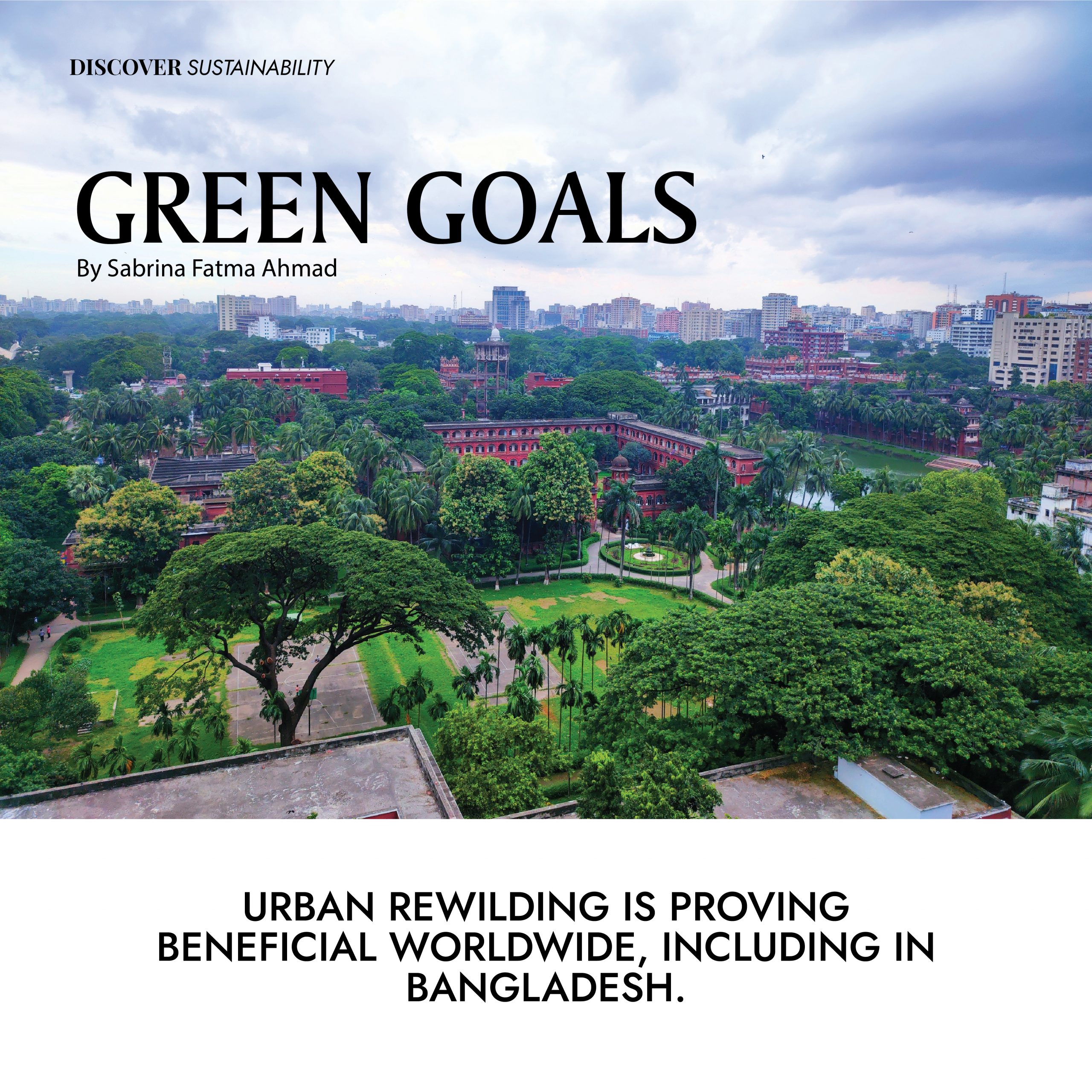
If looking out over the concrete landscape of Dhaka leaves you feeling hot and bothered and not in a good way, you’re not alone. According to a study jointly conducted by researchers from Bangladesh University of Professionals (BUP), Jahangirnagar University with support from the Asian Development Bank, green spaces in the city have shrunk from 17% in 1989 to 2% in 2020, driven by Dhaka’s rapid urbanisation, and with temperatures on the rise, it’s not looking good for us.
The good news is that this is reversible, if enough people act together to restore vegetation in urban spaces. Here are three ways in which this can be done.
Level 1: Individual action – rooftop gardening
When space for yards and gardens is a luxury, eco-minded individuals have been turning to potted plants in their verandas and rooftops for years. And if you’re wondering if that makes a difference at all, rest assured that it does.
Earlier this year, Environment, Forest and Climate Change Adviser Syeda Rizwana Hasan spoke at a seminar, where she advocated for more rooftop gardens in the city.
“Everyone can play a key role in protecting the environment if they take the initiative of setting up a roof garden on their respective roofs. Roof gardening also helps safeguard mental health and ensure food security along with maintaining the ecological balance of the environment.” ~Syeda Rizwana Hasan, Environment, Forest and Climate Change Adviser
This is not a conversation limited to Bangladesh. Countries like France, Switzerland, and Canada have all passed laws regulating and demanding that all new commercial and residential buildings have at least a partly green rooftop. Studies conducted in these countries have shown an improved air quality, improved Urban Heat Island (UHI) control, increased wildlife diversity, increased energy efficiency, noise pollution reduction and numerous other benefits.
Level 2: Local action – community gardens
In a bid to prepare the next generation for the problems associated with climate change, schools around the world are using community gardens as experiential learning tools, and the results have been promising.
“Introducing community gardening in schools teaches students teamwork. It enhances problem-solving skills. They learn how to be patient and how that brings good results. For those who struggle with self-esteem issues, it gives them a sense of accomplishment. They learn how to take care of plants and the environment. It is an interdisciplinary activity that allows teachers of various subjects to provide practical applications of the theories in their fields..” ~Rumayla Mannan, Activities and Event Coordinator, Glenrich International School, Satarkul.
Earlier this year, Sir John Wilson school teamed up with the SDG Award winning organisation Mission Green Bangladesh for a lakeside cleanup/tree plantation project ahead of Pohela Boishakh, which transformed the dirty, polluted area into a welcoming green community space for the festival
While currently community gardens are mostly the purview of a handful of schools, if it becomes a bigger practice, particularly in low-income areas, examples from similar projects in other countries have shown that this is an effective measure to address multiple problems, such as food security, air quality, heat index and urban stress.
Level 3: Policy in action – public parks
Open green areas such as parks, playgrounds and gardens comprise the breathing space of any urban settlement. While such spaces are too few and far between, the few restoration projects undertaken in public parks have been gifts that keep on giving. Under the ‘Jol-Sobuje Dhaka’ project by the Dhaka South City Corporation (DSCC) which kicked off in 2017, resulted in the Shahid Alim Uddin playground and Rasulbagh Children’s Park being inaugurated in 2019. What used to be a dirty, derelict space frequented by drug dealers and other unsavoury elements has become a bustling green and safe public space enjoyed by all members of the local community. The design, which incorporates green tech such as rainwater collection, water purification and automated sprinklers, and the inclusion of a cafe which provides a source of income for the playground’s upkeep, makes the park a self-sustaining hub.
A similar initiative was taken by Dhaka North in 2020 as part of a push to revive green spaces in the city. The goal was to keep the space open and safe, while introducing enough meaningful activity to keep people engaged across different age groups, interests, and income levels. Justice Shahabuddin Ahmed Park stands out as possibly one of Dhaka’s most successful and inclusive public spaces, boasting an international standard cafe, an affordable tea stall, and a popular bookstore as part of the attractions of the park. From dedicated bike paths, walkways, shaded seating areas, a basketball court, prayer rooms and public toilets, the park is a multi-functional space that encourages a healthy lifestyle.
